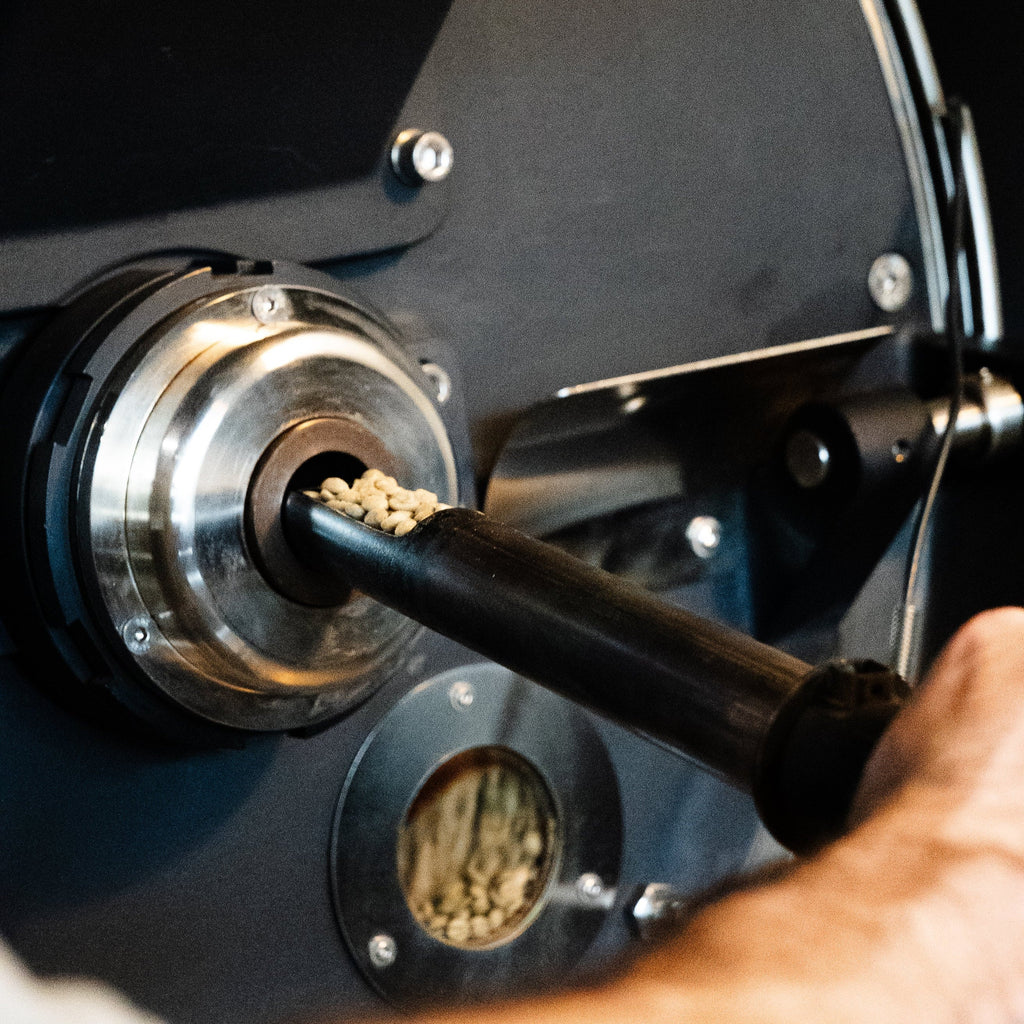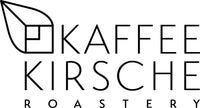From raw bean to roasted bean – What really happens during roasting

You love good beans, even filtering by hand, but have you ever wondered what actually happens during roasting? Why do some beans taste fruity, while others taste like dark chocolate? And why filter roasting and espresso roasting are two completely different worlds?
Spoiler alert: It's not (just) the bean and its preparation – it's also the way it was roasted. Precisely, with sensitivity, and a tremendous amount of experience. We'll take you into the roasting room – on a little journey through heat, crackling, and caramelized aromas.
1. Drying Phase
Temperature: approx. 100–160 °C
Duration: 4–6 minutes
Before anything exciting happens, the water has to be removed first. The bean initially contains around 12% moisture. This slowly evaporates—which smells a bit like hay—and prepares the bean for the actual roasting.

2. Maillard phase (Browning phase)
Temperature: approx. 160–190 °C
Duration: 3–5 minutes
Now we get down to business: The Maillard reaction begins – a chemical reaction between sugar and amino acids. It sounds complicated, but it's the reason coffee tastes so good. Caramel, toast, nuts – all of this is created here.

3. First Crack
At around 195–205°C, the bean suddenly bursts open – and you hear it: crack. Like popcorn. Pressure, CO₂, and steam escape, the cell structure changes, and the roasted aromas gain momentum. Now you have to pay attention – this development happens quickly.
4. Development Phase (Development Phase/Time)
Temperature: 205–220 °C
Duration: 1–3 minutes
This is where everything is decided: how sweet, how clear, how balanced your coffee will be in the end. A short development period brings a lot of acidity, a longer one brings more roasted aromas and body. It's a dance of seconds – every batch is a little different.

5. Second Crack (optional)
If you like it really dark—for classic Italian espressos, for example—you can go all the way to the so-called second crack. The bean becomes oily, the flavor intense, often smoky, tobacco-like, sometimes a bit old-school. You have to like it. We dose it carefully.
Roasting isn't a black box, it's a craft. Every phase is important, every second counts. And in the end, you get exactly what was decided during roasting: Fruity or chocolatey? Clear or creamy? Direct or complex? That's why we roast each bean individually – tailored to its origin, processing, and, of course, how you prepare it.

